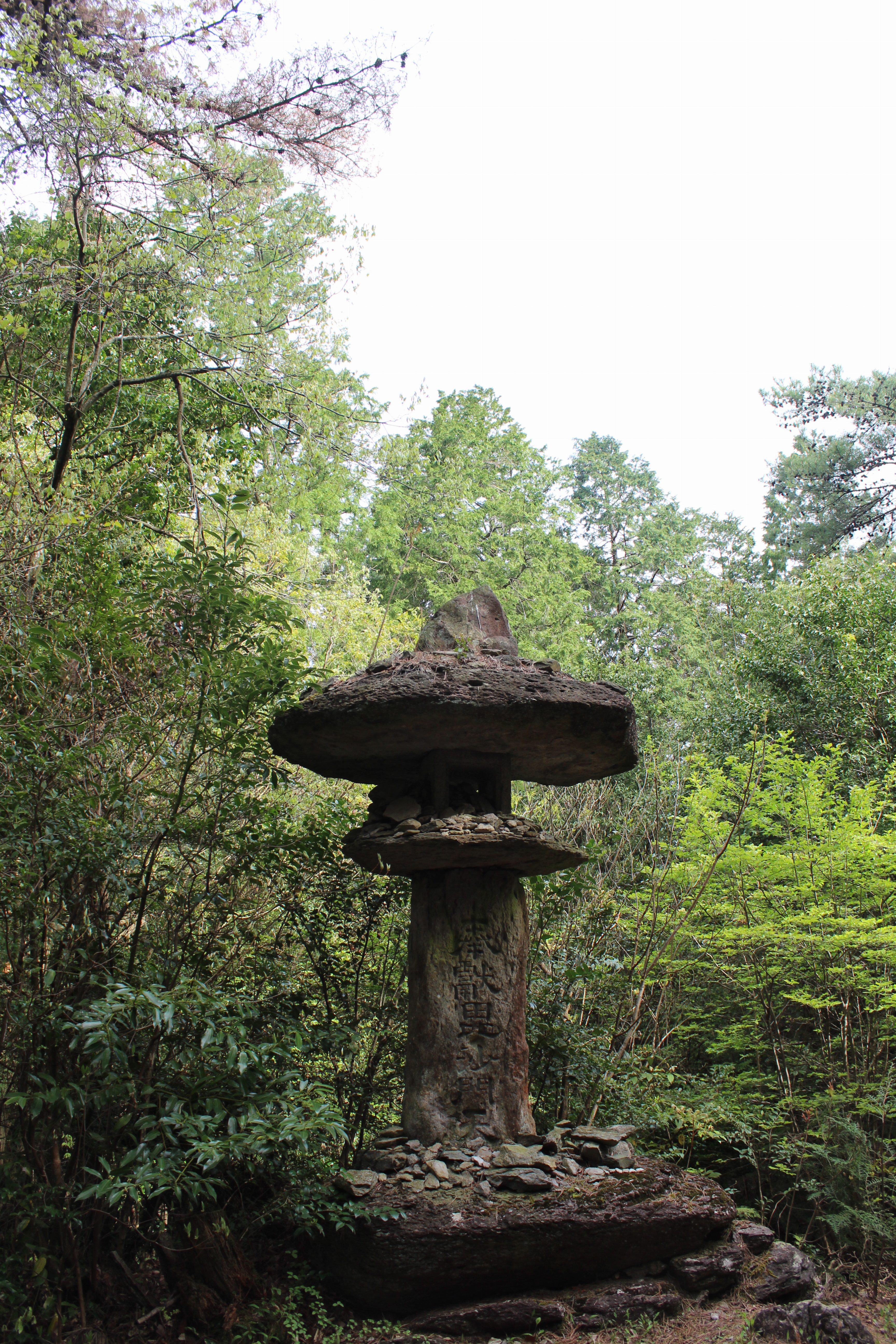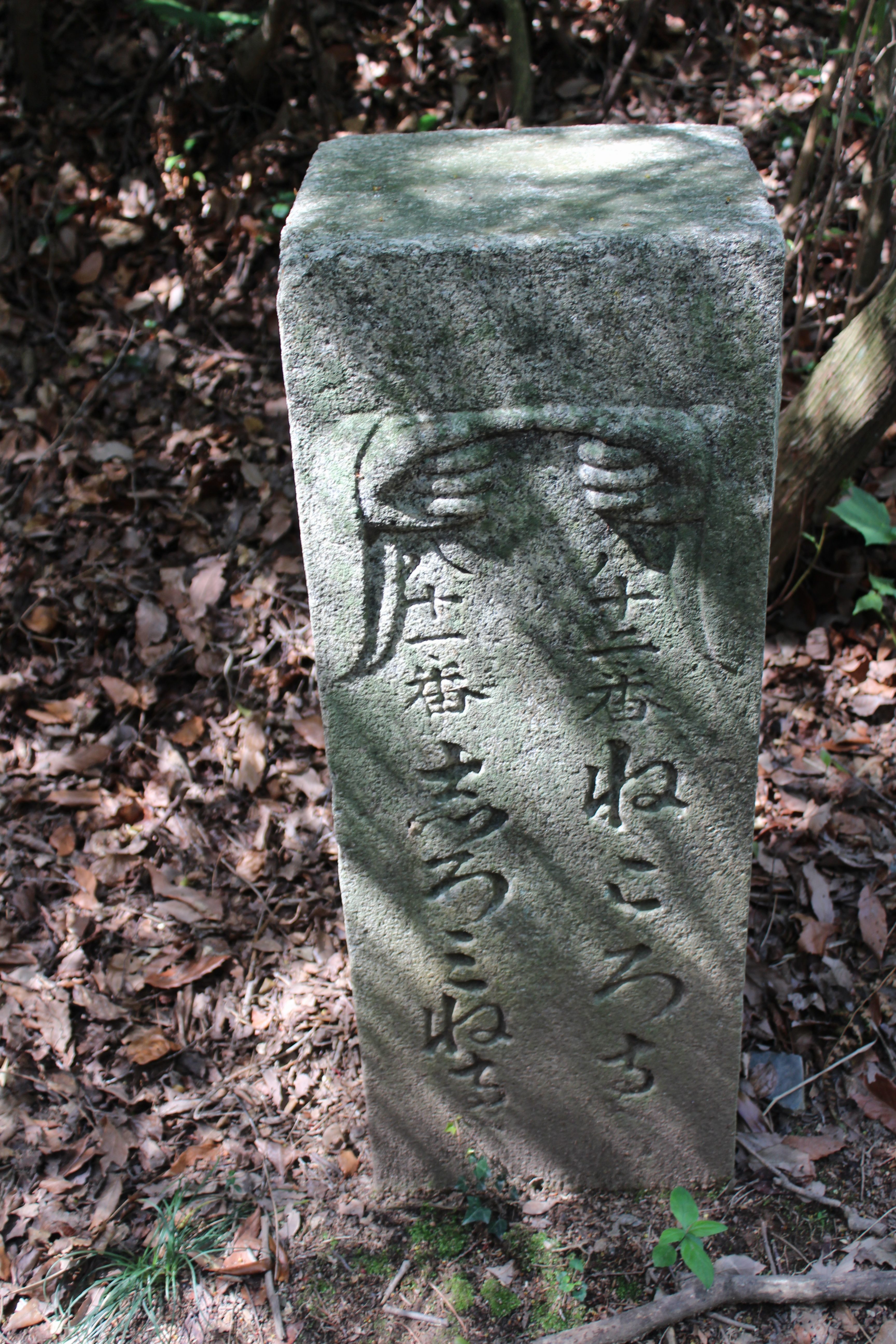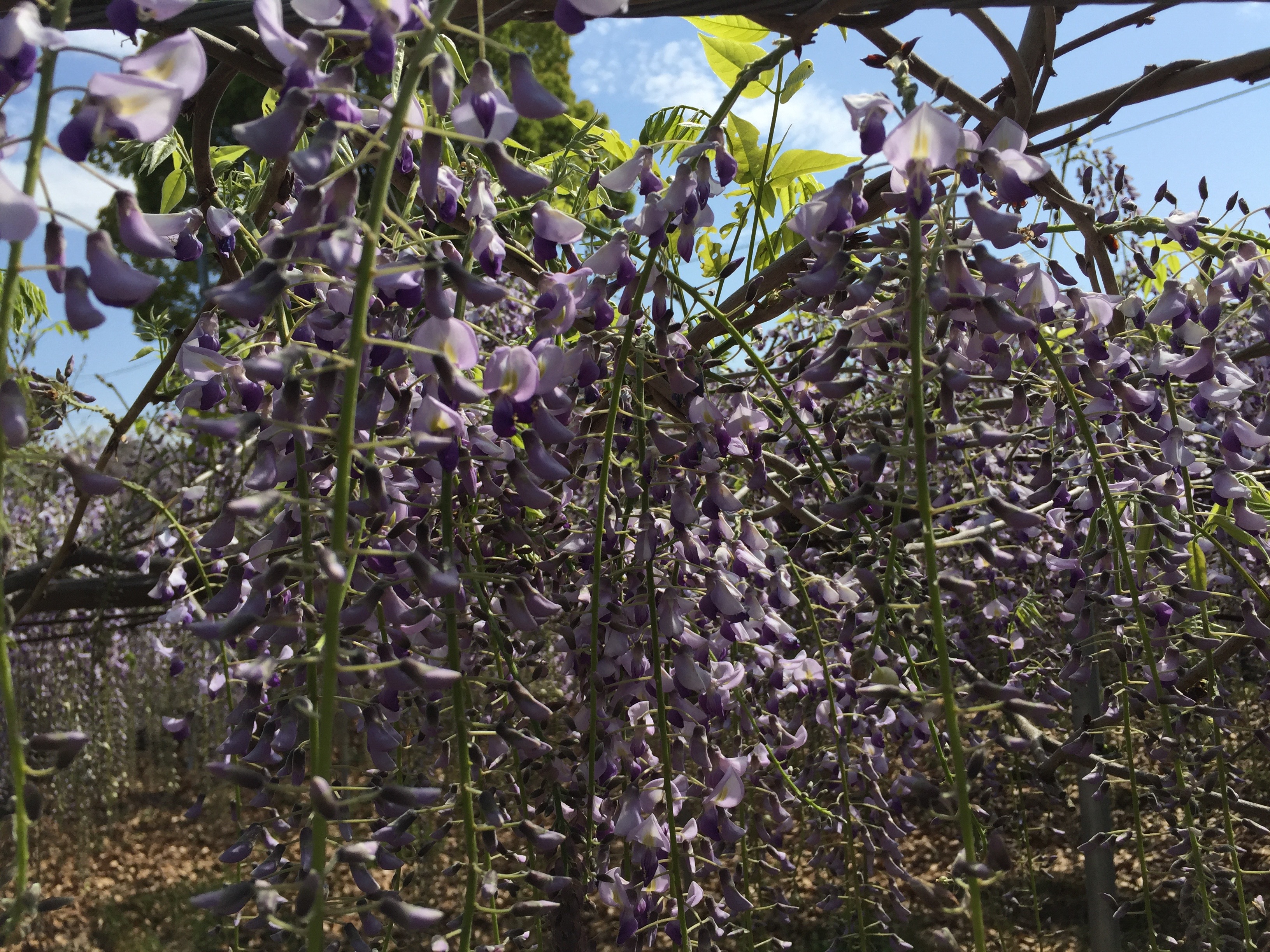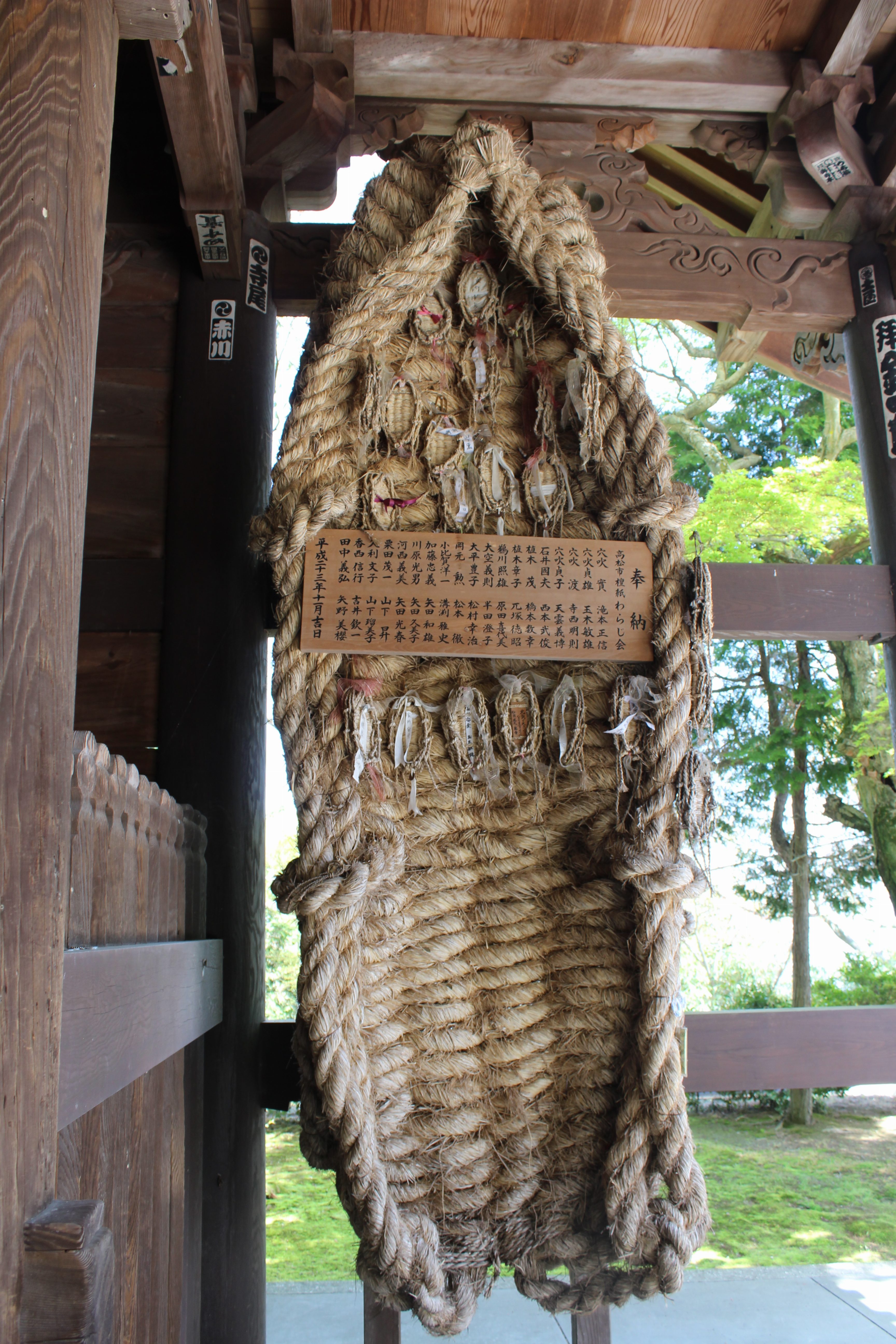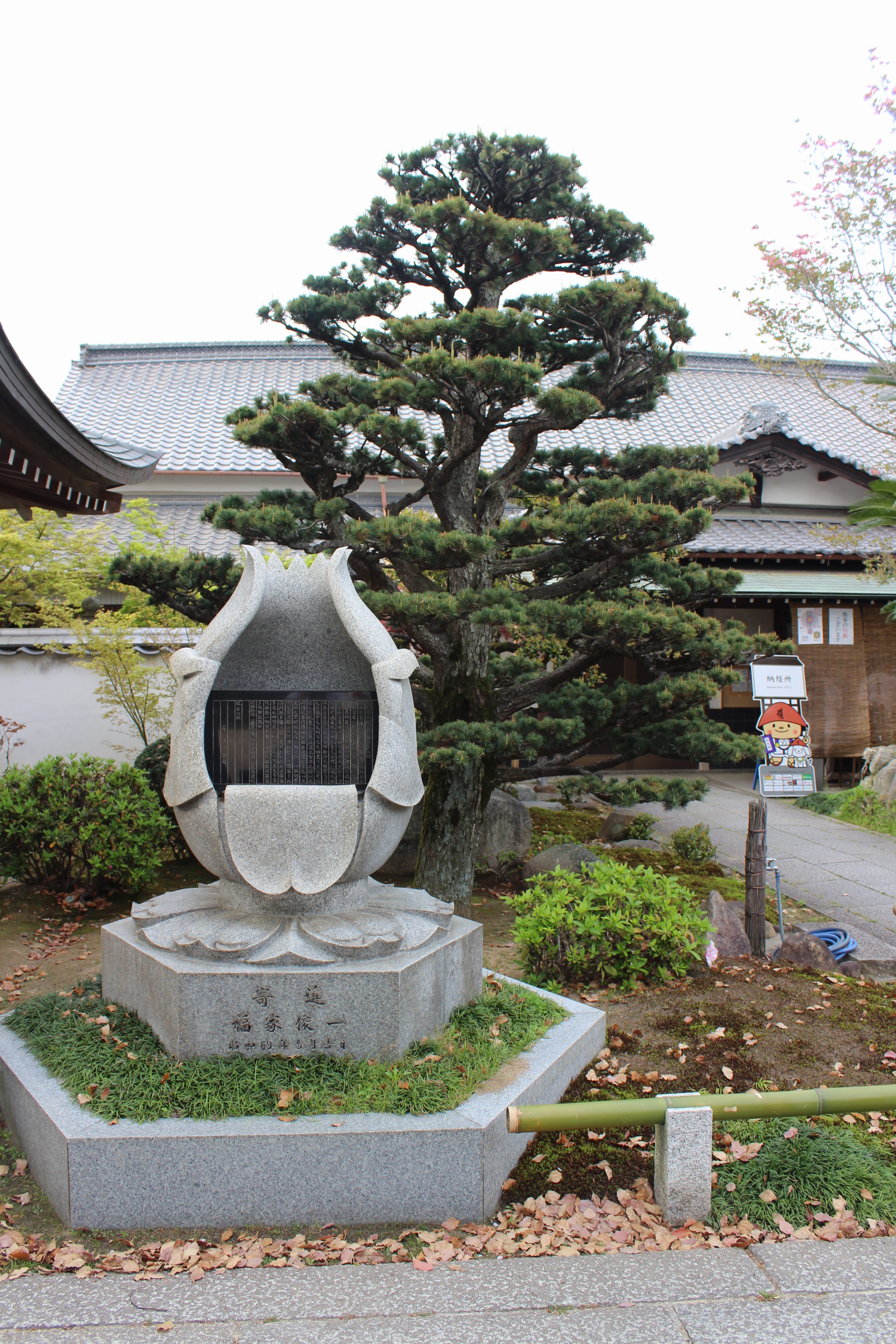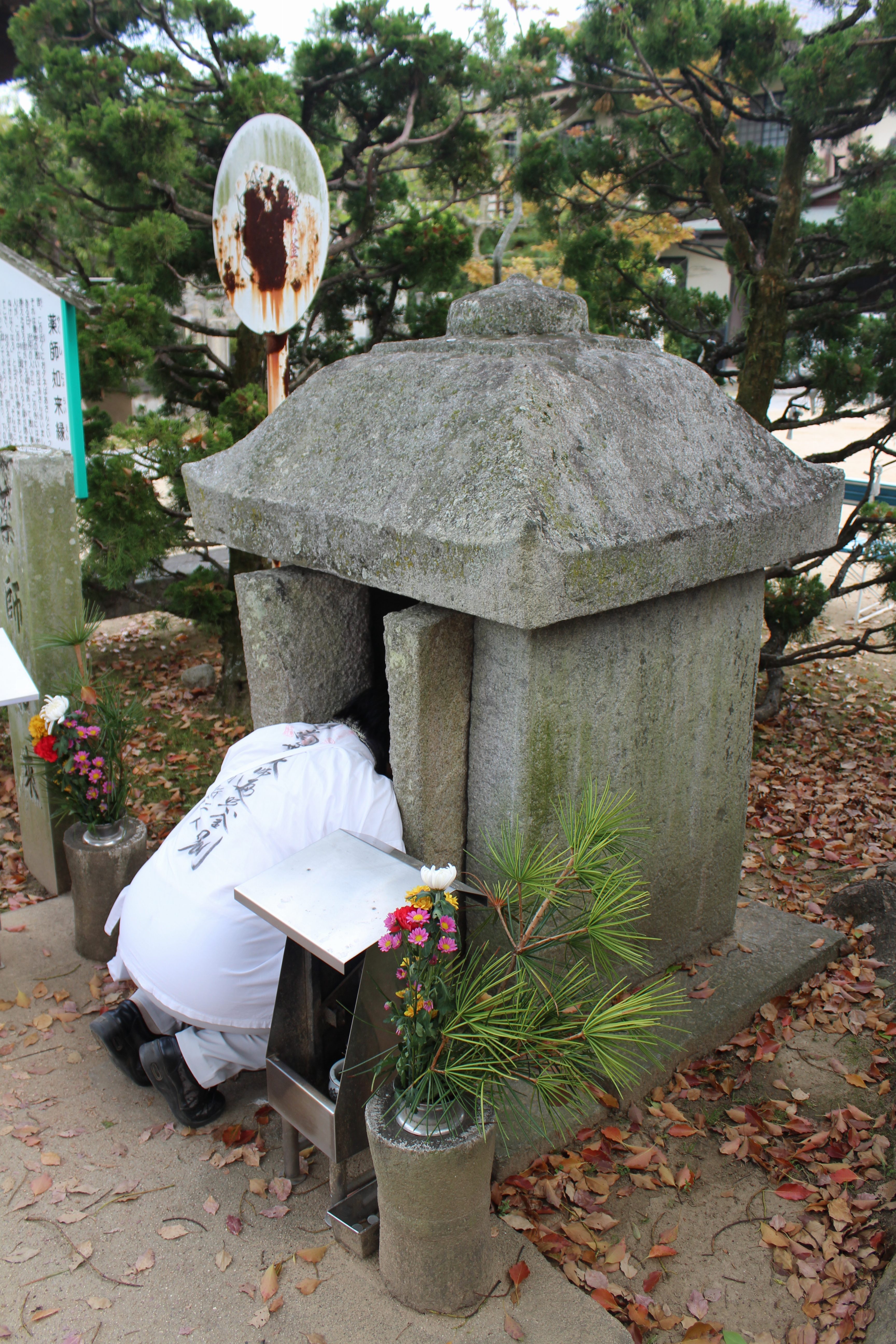Waraji, the traditional shoes of pilgrims and travelers (temples 81,82,83)
The walk up to the Shiromineji (temple 81), called also the temple of the white peak,
was very beautiful. The temple is located on a mountain plateau called Goshiki-dai
(five-colored-grounds). Shiromine (white peak), Kimine(yellow peak), Akamine
(red peak), Aomine (blue peak) and Kuromini (black peak).
Ishi-dōrō (stone lantern) on the way to Shiromineji
Like many other temples of the Shikoku-no-michi, Path of Shikoku, Kūkai originally
founded temple 81. One of the emperors of the Chrysanthemum throne, Emperor
Sutoku (12th century), has a mausoleum and memorial here. The memorial is called
Tonshouji.
Shiromineji
Many temples and shrines have donation stones with the inscription of the donor’s
name – like the line of stone tablets along the stairs in the photo above.
The stone is a typical path marker. In this case, the hand pointing to the left says
Negoroji (temple 82). The hand pointing the right points in the direction of
Shiromineji (temple 81)
On the walk to Negoroji (temple 82), I met Ella, a French pilgrim. We got along well
and spent the next couple of days together.
Ella admiring the spring blossoms
The middle of April was a great time to hike. Spring was everywhere. Wisterias, a
protected plant in the Kagawa prefecture, were starting to bloom. Every year from
April 26 – May 5, the Wisteria Festival is celebrated in Kagawa.
Six feet tall Kujaku-Fuji (Peacock wisteria) with a small Shinto shrine
Negoroji (temple 82) is also located on the same mountain plateau, but on the blue
peak mountain Aomine.
At the entrance, two enormous straw sandals called Waraji are exhibited in front of
the temple gate. This is not unusual. The huge sandals are there to trick evil spirits
into staying out of the temple ground by making them believe that the shoes belong
to giant guardians of the temple. Little sandals are often attached to the wooden
fences of the gate. In the old days, these Waraji were the traditional shoes Japanese
pilgrims wore on their pilgrimage. They only lasted for 24 hours. Foot problems are
the most common problems on a walking pilgrimage.
Huge Waraji with little straw sandals attached
Vegetation in Negoroji
Ichinomiyaji (temple 83), called the temple of the First Shrine, had two interesting
sculptures.
Two Ohenros reading the tablet inside the sculpture of a lotus bud –
the Heart Sutra, Ohenros chant at each temple
There was also a shrine dedicated to Yakushi Nyorai, the Healing Buddha. During
Taiho Period (701-704 C.E.), Ichinomiya-ji (temple 83) was built connected with the
Tamura-jinja or Sanuki Ichinomiya (1st Shrine), and separated later, like many other
temples and shrines. The stone is probably a left over from this connection. It is told
that Kōbō Daishi built this shrine to warn people of the boiling sounds of the Hell
Kettle to wake up. If wrong-doing people put their heads in, the door shuts up and
catches them. Legend tells that one time an old woman with the name O-tane, Seed,
did not believe in it and tried to put her head in and was caught by her head hearing
the boiling sounds. She repented the wrong doings, the door opened and let her
free. She awakened. The story of the roaring sounds of fire might be rooted in the
volcanic activities in Japan.
.
.
.

